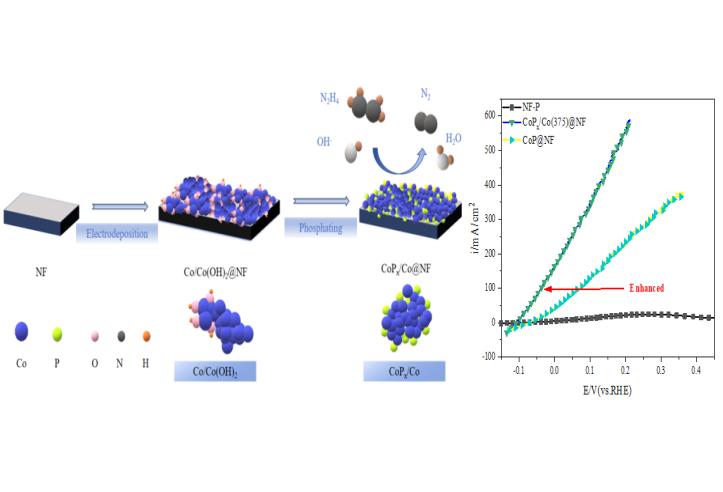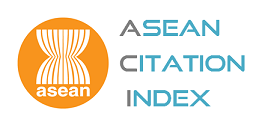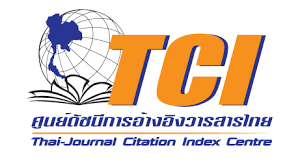Regulating CoP\(_{x}\)/Co heterostructures for enhanced electrocatalytic activity toward hydrazine oxidation reaction
DOI:
https://doi.org/10.55713/jmmm.v35i2.2348Keywords:
Electrocatalyst, Heterostructure, Hydrazine oxidation reaction, ElectrodepositionAbstract
Hydrazine hydrate (N2H4∙H2O) is considered an ideal fuel for fuel cells. Constructing a cobalt phosphide/cobalt (CoPx/Co) heterostructure can achieve efficient electrocatalytic activity for hydrazine oxidation reaction. Traditional strategies for constructing CoPx/Co heterostructures took less consideration on the exposure of the active sites. In this study, 3D nanoflower-like nano CoPx/Co heterostructures with highly exposed active sites were obtained on a nickel foam (NF) through a dual-component phosphating strategy, i.e., regulating the relative content of Co and Co(OH)2 with cathodic current density and utilizing the differences in their phosphating behaviors. The potential at 100 mA∙cm‒2 and Tafel slope of the optimized CoPx/Co(375)@NF electrode prepared with the cathodic current density of 375 mA∙cm‒2 are ‒37.4 mV (vs.RHE) and 58.9 mA∙dec‒1, respectively, in a 0.2 M N2H4∙H2O solution. The stable potential was maintained after 12 h under a high current density of 100 mA∙cm‒2. The superior electrocatalysis activity toward N2H4∙H2O is proved closely relative with the constructing of CoPx/Co heterostructure. This study provides a new strategy for the development of efficient hydrazine oxidation catalysts by using a dual-component phosphating approach to fully expose the active sites of the CoPx/Co heterostructure.
Downloads
References
X. Zhao, Q. Feng, M. Liu, Y. Wang, W. Liu, D. Deng, J. Jiang, X. Zheng, L. Zhan, J. Wang, H. Zheng, Y. Bai, Y. Chen, X. Xiong, and Y. Lei, “Built-in electric field promotes interfacial adsorption and activation of CO2 for C1 products over a wide potential window,” ACS Nano, vol. 18, no. 13, pp. 9678-9687, 2024. DOI: https://doi.org/10.1021/acsnano.4c01190
X. Zhao, M. Liu, Y. Wang, Y. Xiong, P. Yang, J. Qin, X. Xiong, and Y. Lei, “Designing a built-in electric field for efficient energy electrocatalysis,” ACS Nano, vol. 16, no. 12, pp. 19959-19979, 2022. DOI: https://doi.org/10.1021/acsnano.2c09888
D. Deng, J. Wu, Q. Feng, X. Zhao, M. Liu, Y. Bai, J. Wang, X. Zheng, J. Jiang, Z. Zhuang, X. Xiong, D. Wang, and Y. Lei, “Highly reversible zinc-air batteries at 40°C enabled by anion-mediated biomimetic fat,” Advanced Functional Materials, vol. 34, no. 2, p. 2308762, 2024. DOI: https://doi.org/10.1002/adfm.202308762
M. A. Aminudin, S. K. Kamarudin, B. H. Lim, E. H. Majilan, M. S. Masdar, and N. Shaari, “An overview: Current progress on hydrogen fuel cell vehicles,” International Journal of Hydrogen Energy, vol. 48, no. 11, pp. 4371-4388, 2023. DOI: https://doi.org/10.1016/j.ijhydene.2022.10.156
A. Pramuanjaroenkij, and S. Kakac, “The fuel cell electric vehicles: The highlight review,” International Journal of Hydrogen Energy, vol. 48, no. 25, pp. 9401-9425, 2023. DOI: https://doi.org/10.1016/j.ijhydene.2022.11.103
N. Sazali, W. N. Wan Salleh, A. S. Jamaludin, and M. N. Mhd Razali, “New perspectives on fuel cell technology: A brief review,” Membranes, vol. 10, no. 5, p. 99, 2020. DOI: https://doi.org/10.3390/membranes10050099
P. Muthukumar, A. Kumar, M. Afzal, S. Bhogilla, P. Sharma, A. Parida, S. Jana, E. A. Kumar, R. K. Pai, and I. P. Jain, “Review on large-scale hydrogen storage systems for better sustainability,” International Journal of Hydrogen Energy, vol. 48, no. 85, pp. 33223-33259, 2023. DOI: https://doi.org/10.1016/j.ijhydene.2023.04.304
A. Raza, M. Arif, G. Glatz, M. Mahmoud, M. Al Kobaisi, S. Alafnan, and S. Iglauer, “A holistic overview of underground hydrogen storage: Influencing factors, current understanding, and outlook,” Fuel, vol. 330, p. 125636, 2022. DOI: https://doi.org/10.1016/j.fuel.2022.125636
E. Rivard, M. Trudeau, and K. Zaghib, “Hydrogen storage for mobility: A review,” Materials, vol. 12, no. 12, p. 1973, 2019. DOI: https://doi.org/10.3390/ma12121973
M. A. U. Din, M. Idrees, S. Jamil, S. Irfan, G. Nazir, M. A. Mudassir, M. S. Saleem, S. Batool, N. Cheng, and R. Saidur, “Advances and challenges of methanol-tolerant oxygen reduction reaction electrocatalysts for the direct methanol fuel cell,” Journal of Energy Chemistry, vol. 77, pp. 499-513, 2023. DOI: https://doi.org/10.1016/j.jechem.2022.11.023
J. Shi, Y. Zhu, Y. Feng, J. Yang, and C. Xia, “A prompt decarbonization pathway for shipping: Green hydrogen, ammonia, and methanol production and utilization in marine engines,” Atmosphere, vol. 14, no. 3, p. 584, 2023. DOI: https://doi.org/10.3390/atmos14030584
Z. Tian, Y. Wang, X. Zhen, and Z. Liu, “The effect of methanol production and application in internal combustion engines on emissions in the context of carbon neutrality: A review,” Fuel, vol. 320, p. 123902, 2022. DOI: https://doi.org/10.1016/j.fuel.2022.123902
Y. Wang, Q. Cao, L. Liu, Y. Wu, H. Liu, Z. Gu, and C. Zhu, “A review of low and zero carbon fuel technologies: Achieving ship carbon reduction targets,” Sustainable Energy Technologies and Assessments, vol. 54, p. 102762, 2022. DOI: https://doi.org/10.1016/j.seta.2022.102762
W. Xu, Z. Lu, X. Sun, L. Jiang, and X. Duan, “Superwetting electrodes for gas-involving electrocatalysis,” Accounts of Chemical Research, vol. 51, no. 7, pp. 1590-1598, 2018. DOI: https://doi.org/10.1021/acs.accounts.8b00070
K. Asazawa, K. Yamada, H. Tanaka, A. Oka, M. Taniguchi, and T. Kobayashi, “A platinum-free zero-carbon-emission easy fuelling direct hydrazine fuel cell for vehicles,” Angewandte Chemie-International Edition, vol. 46, no. 42, pp. 8024-8027, 2007. DOI: https://doi.org/10.1002/anie.200701334
N. Fujiwara, S.-i. Yamazaki, and K. Yasuda, “Research and development on direct polymer electrolyte fuel cells,” Journal of the Japan Petroleum Institute, vol. 54, no. 4, pp. 237-247, 2011. DOI: https://doi.org/10.1627/jpi.54.237
E. Granot, B. Filanovsky, I. Presman, I. Kuras, and F. Patolsky, “Hydrazine/air direct-liquid fuel cell based on nanostructured copper anodes,” Journal of Power Sources, vol. 204, pp. 116-121, 2012. DOI: https://doi.org/10.1016/j.jpowsour.2011.12.008
K. Yamada, K. Yasuda, N. Fujiwara, Z. Siroma, H. Tanaka, Y. Miyazaki, and T. Kobayashi, “Potential application of anion-exchange membrane for hydrazine fuel cell electrolyte,” Electrochemistry Communications, vol. 5, no. 10, pp. 892-896, 2003. DOI: https://doi.org/10.1016/j.elecom.2003.08.015
K. Pang, Y. Tang, C. Qiu, M. Zhang, A. Tayal, S. Feng, C. Long, Y. Wang, J. Chang, B. Pang, A. Sikdar, S. S. Garakani, Y. Zhang, H. Wang, W. Zhang, G. Luo, Y. Wang, and J. Yuan, “Redirecting configuration of atomically dispersed selenium catalytic sites for efficient hydrazine oxidation,” Matter, vol. 7, no. 2, pp. 655-667, 2024. DOI: https://doi.org/10.1016/j.matt.2023.12.001
J. Zhou, X. Meng, R. Zhang, H. Liu, and Z. Liu, “Progress on electrodeposition of rare earth metals and their alloys,” Electrocatalysis, vol. 12, no. 6, pp. 628-640, 2021. DOI: https://doi.org/10.1007/s12678-021-00688-1
K. Yamada, K. Asazawa, K. Yasuda, T. Ioroi, H. Tanaka, Y. Miyazaki, and T. Kobayashi, “Investigation of PEM type direct hydrazine fuel cell,” Journal of Power Sources, vol. 115, no. 2, pp. 236-242, 2003. DOI: https://doi.org/10.1016/S0378-7753(03)00008-9
X. Gao, K. Lu, J. Chen, J. Min, D. Zhu, and M. Tan, “NiCoP-CoP heterostructural nanowires grown on hierarchical Ni foam as a novel electrocatalyst for efficient hydrogen evolution reaction,” International Journal of Hydrogen Energy, vol. 46, no. 45, pp. 23205-23213, 2021. DOI: https://doi.org/10.1016/j.ijhydene.2021.03.155
S. Chen, C. Wang, S. Liu, M. Huang, J. Lu, P. Xu, H. Tong, L. Hu, and Q. Chen, “Boosting hydrazine oxidation reaction on CoP/Co mott-schottky electrocatalyst through engineering active sites,” Journal of Physical Chemistry Letters, vol. 12, no. 20, pp. 4849-4856, 2021. DOI: https://doi.org/10.1021/acs.jpclett.1c00963
Y. Zhang, Y. Qiu, Z. Ma, Y. Wang, Y. Zhang, Y. Ying, Y. Jiang, Y. Zhu, and S. Liu, “Core-corona Co/CoP clusters strung on carbon nanotubes as a Schottky catalyst for glucose oxidation assisted H2 production,” Journal of Materials Chemistry A, vol. 9, no. 17, pp. 10893-10908, 2021. DOI: https://doi.org/10.1039/D0TA11850H
T. Liu, P. Li, N. Yao, G. Cheng, S. Chen, W. Luo, and Y. Yin, “CoP‐Doped MOF‐based electrocatalyst for pH‐universal hydrogen evolution reaction,” Angewandte Chemie International Edition, vol. 58, no. 14, pp. 4679-4684, 2019. DOI: https://doi.org/10.1002/anie.201901409
H. H. Zhang, G. S. Han, Y. Y. Liu, L. L. Zhao, W. B. Zhang, M. T. Khalil, H. J. Wei, C. M. Wang, T. Liu, X. J. Guo, X. L.
Wu, J. C. Jiang, and B. J. Li, “CoP/Co heterojunction on porous g-C3N4 nanosheets as a highly efficient catalyst for hydrogen generation,” Journal of Colloid and Interface Science, vol. 658, pp. 22-31, 2024. DOI: https://doi.org/10.1016/j.jcis.2023.12.044
Z. Lu, Y. Cao, J. Xie, J. Hu, K. Wang, and D. Jia, “Construction of Co2P/CoP@Co@NCNT rich-interface to synergistically promote overall water splitting,” Chemical Engineering Journal, vol. 430, p. 132877, 2022. DOI: https://doi.org/10.1016/j.cej.2021.132877
J. S. Santos, F. Trivinho-Strixino, and E. C. Pereira, “Investigation of Co(OH)2 formation during cobalt electrodeposition using a chemometric procedure,” Surface and Coatings Technology, vol. 205, no. 7, pp. 2585-2589, 2010. DOI: https://doi.org/10.1016/j.surfcoat.2010.10.005
Z. Yu, Z. Cheng, S. R. Majid, Z. Tai, X. Wang, and S. Dou, “Smart design of free-standing ultrathin Co–Co(OH)2 composite nanoflakes on 3D nickel foam for high-performance electro-chemical capacitors,” Chemical Communications, vol. 51, no. 9, pp. 1689-1692, 2015. DOI: https://doi.org/10.1039/C4CC07499H
F. Su, C. Liu, J. Guo, and P. Huang, “Characterizations of nanocrystalline Co and Co/MWCNT coatings produced by different electrodeposition techniques,” Surface and Coatings Technology, vol. 217, pp. 94-104, 2013. DOI: https://doi.org/10.1016/j.surfcoat.2012.11.079
X. Wu, M. Liu, Z. Jiang, J. Li, K. Song, A. Wei, D. Meng, T. Dong, Z. Gao, W. Zhang, and W. Zheng, “Electrodeposition‐potential tuning rejuvenates the concurrent preparation from α‐Co(OH)2 with larger interlayer‐spacings to β‐Co(OH)2,” Batteries & Supercaps, p. e202400699, 2025. DOI: https://doi.org/10.1002/batt.202400699
L. Zhu, J. Huang, G. Meng, T. Wu, C. Chen, H. Tian, Y. Chen, F. Kong, Z. Chang, X. Cui, and J. Shi, “Active site recovery and N-N bond breakage during hydrazine oxidation boosting the electrochemical hydrogen production,” Nature Communications, vol. 14, no. 1, p. 1997, 2023. DOI: https://doi.org/10.1038/s41467-023-37618-2
J. Zhou, S.-f. Wang, and X.-s. Song, “Electrodeposition of cobalt in double-membrane three-compartment electrolytic reactor,” Transactions of Nonferrous Metals Society of China, vol. 26, no. 6, pp. 1706-1713, 2016. DOI: https://doi.org/10.1016/S1003-6326(16)64279-6
C. Yue, N. Zhang, Z. Zhu, P. Chen, F. Meng, X. Liu, X. Wei, and J. Liu, “Multi‐strategy architecture of high‐efficiency electrocatalysts for underwater Zn–H2O2 batteries with superior power density of 442 mW∙cm−2,” Small, vol. 18, no. 12, p. 2106532, 2022. DOI: https://doi.org/10.1002/smll.202106532
L.-M. Cao, Y.-W. Hu, S.-F. Tang, A. Iljin, J.-W. Wang, Z.-M. Zhang, and T.-B. Lu, “Fe-CoP electrocatalyst derived from a bimetallic prussian blue analogue for large-current-density oxygen evolution and overall water splitting,” Advanced Science, vol. 5, no. 10, p. 1800949, 2018. DOI: https://doi.org/10.1002/advs.201800949
N. Bai, Q. Li, D. Mao, D. Li, and H. Dong, “One-Step electrodeposition of Co/CoP film on Ni foam for efficient hydrogen evolution in alkaline solution,” ACS Applied Materials & Interfaces, vol. 8, no. 43, pp. 29400-29407, 2016. DOI: https://doi.org/10.1021/acsami.6b07785
M. Deng, H. Yang, L. Peng, L. Zhang, L. Tan, G. He, M. Shao, L. Li, and Z. Wei, “Insight into the boosted activity of TiO2-CoP composites for hydrogen evolution reaction: Accelerated mass transfer, optimized interfacial water, and promoted intrinsic activity,” Journal of Energy Chemistry, vol. 74, pp. 111-120, 2022. DOI: https://doi.org/10.1016/j.jechem.2022.06.047
C. Tang, R. Zhang, W. Lu, Z. Wang, D. Liu, S. Hao, G. Du, A. M. Asiri, and X. Sun, “Energy‐saving electrolytic hydrogen generation: Ni2P nanoarray as a high-performance non-noble-metal electrocatalyst,” Angewandte Chemie International Edition, vol. 56, no. 3, pp. 842-846, 2016. DOI: https://doi.org/10.1002/anie.201608899
Y. Kuang, G. Feng, P. Li, Y. Bi, Y. Li, and X. Sun, “Single‐crystalline ultrathin nickel nanosheets array from in situ topotactic reduction for active and stable electrocatalysis,” Angewandte Chemie International Edition, vol. 55, no. 2, pp. 693-697, 2015. DOI: https://doi.org/10.1002/anie.201509616
S. Zhang, X. Wei, S. Dai, H. Wang, and M. Huang, “Efficient hydrazine electro‐oxidation achieved by tailored electron injection into Fe(III) sites activating dehydrogenation,” Advanced Functional Materials, vol. 34, no. 10, p. 2311370, 2023. DOI: https://doi.org/10.1002/adfm.202311370
Y. Liu, J. Zhang, Y. Li, Q. Qian, Z. Li, Y. Zhu, and G. Zhang, “Manipulating dehydrogenation kinetics through dual-doping Co3N electrode enables highly efficient hydrazine oxidation assisting self-powered H2 production,” Nature Communications, vol. 11, no. 1, p. 1853, 2020. DOI: https://doi.org/10.1038/s41467-020-15563-8
Y. Bai, D. Deng, J. Wang, Y. Wang, Y. Chen, H. Zheng, M. Liu, X. Zheng, J. Jiang, H. Zheng, M. Yi, W. Li, G. Fang, D. Wang, and Y. Lei, “Inhibited passivation by bioinspired cell membrane Zn interface for Zn-Air batteries with extended temperature adaptability,” Advanced Materials, vol. 36, no. 40, p. 2411404, 2024. DOI: https://doi.org/10.1002/adma.202411404
Y. Chen, H. Yao, F. Kong, H. Tian, G. Meng, S. Wang, X. Mao, X. Cui, X. Hou, and J. Shi, “V2C MXene synergistically coupling FeNi LDH nanosheets for boosting oxygen evolution reaction,” Applied Catalysis B: Environmental, vol. 297, p. 120474, 2021. DOI: https://doi.org/10.1016/j.apcatb.2021.120474

Downloads
Published
How to Cite
License
Copyright (c) 2025 Journal of Metals, Materials and Minerals

This work is licensed under a Creative Commons Attribution-NonCommercial-NoDerivatives 4.0 International License.
Authors who publish in this journal agree to the following terms:
- Authors retain copyright and grant the journal right of first publication with the work simultaneously licensed under a Creative Commons Attribution License that allows others to share the work with an acknowledgment of the work's authorship and initial publication in this journal.
- Authors are able to enter into separate, additional contractual arrangements for the non-exclusive distribution of the journal's published version of the work (e.g., post it to an institutional repository or publish it in a book), with an acknowledgment of its initial publication in this journal.












